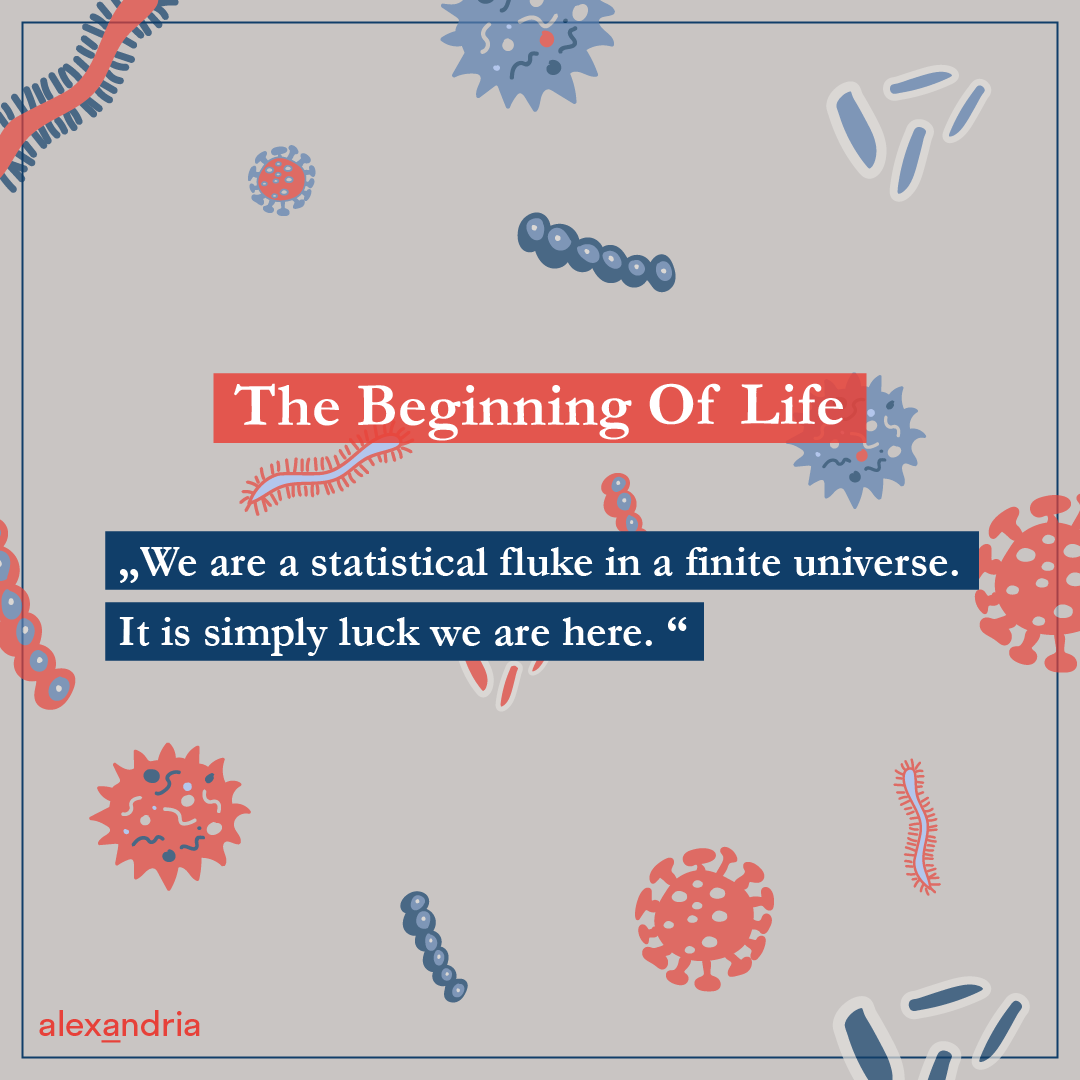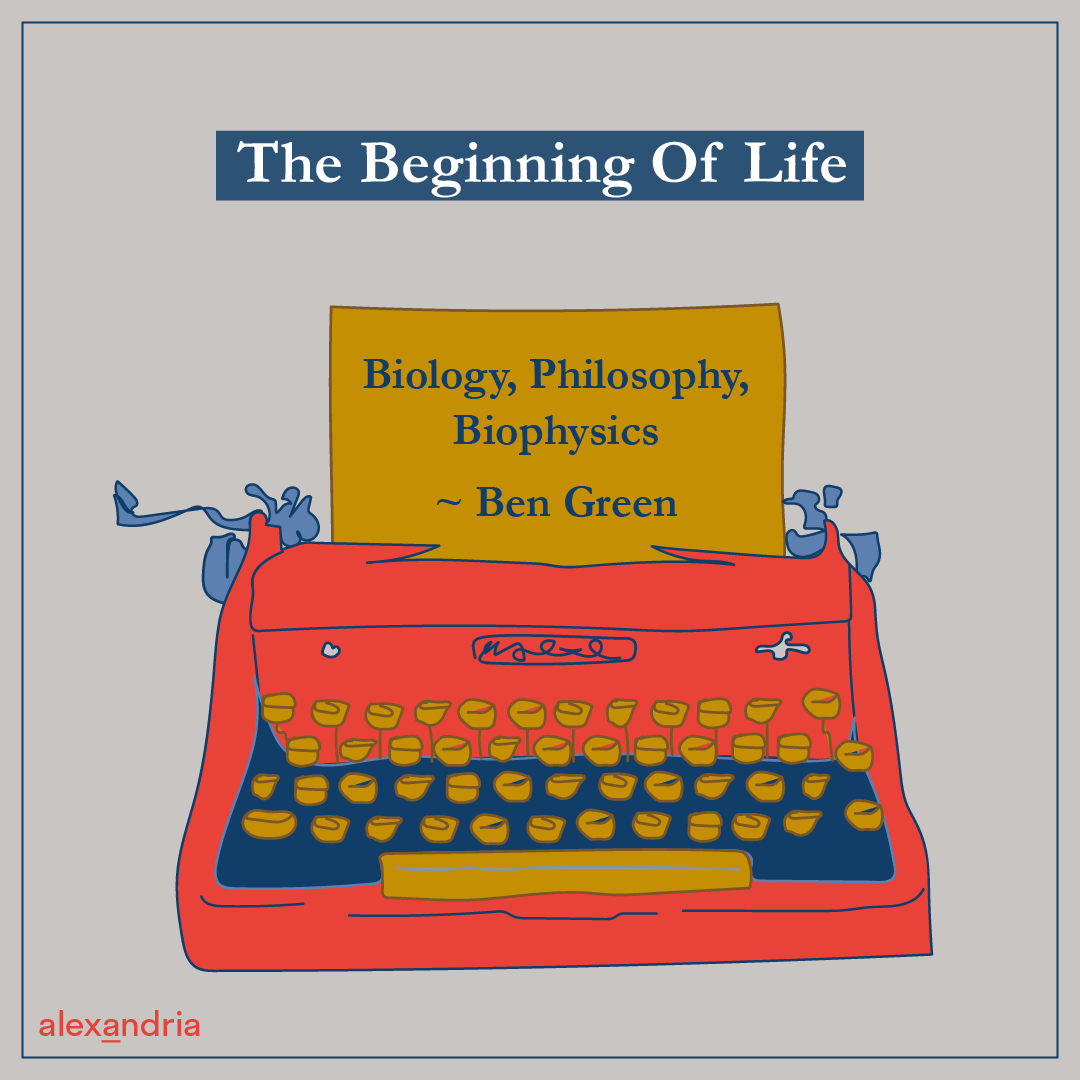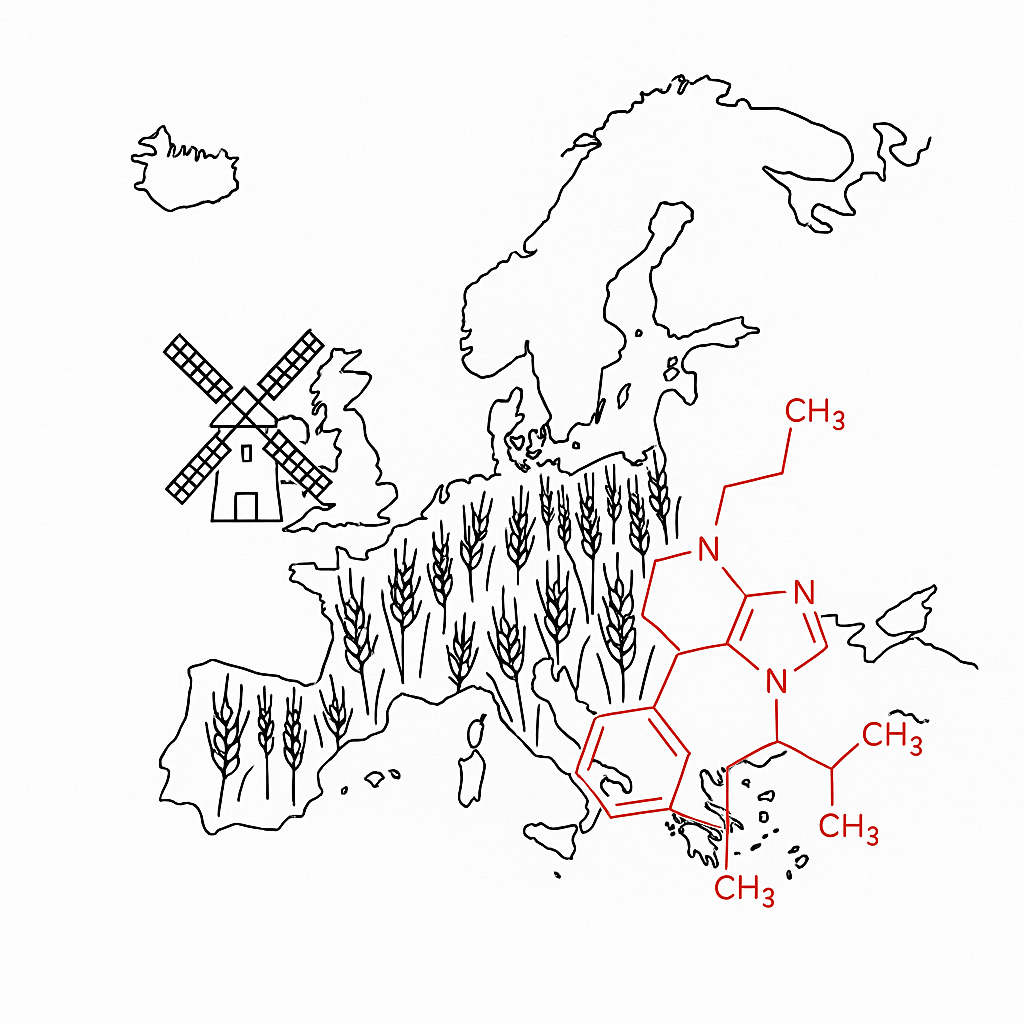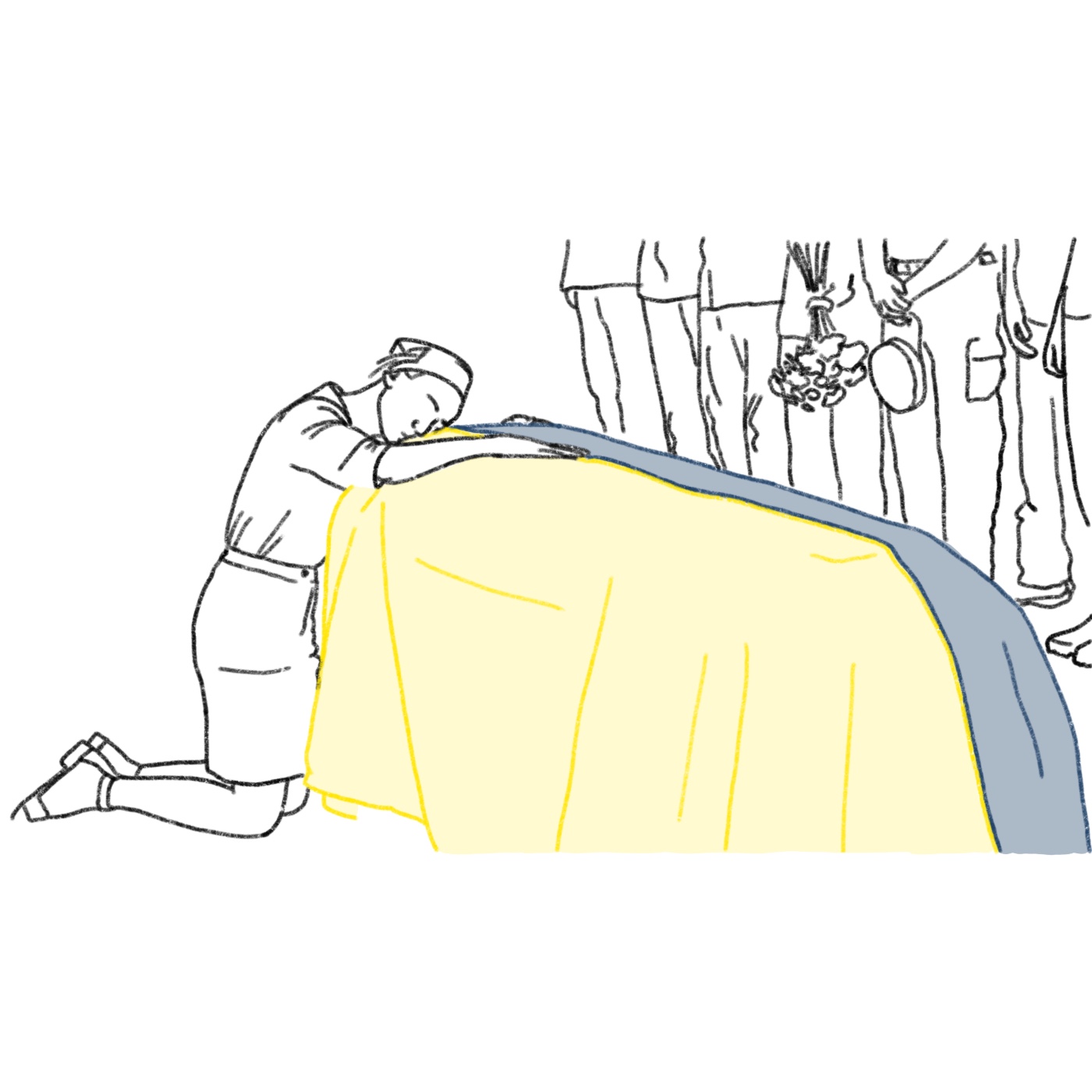In the course of the first alexandria print issue "The First Time", we launched an essay contest together with the blog Future Potentialis.
It is in the nature of an essay to sometimes deviate from the rules and methods of strict scientific work and to offer space for speculation and literary formulations. Although this is not the way alexandria usually works, we have decided to publish the essays with as little changes as possible. Decisive for the selection of the texts by the independent jury were ingenuity, innovation and literary style of the contributions.
The positions of the essays do not necessarily reflect the views of the alexandria editorial team.
The beginnings of life have long been a mystery, and many theories have been proposed. After reading about chaos theory and the abandonment of the reductionist approach (Kesić, 2016), I realised how life may have emerged due to random changes. Recent studies into the slime mold Physarum Polycephalum (Ball, 2008) and the idea of biological computation sparked my imagination (Mitchell, 2011). My idea is similar to Darwin’s Theory of Natural Selection, except that I extend it to objects as fundamental as atoms. Objects that can permanently react to their environment emerged randomly, since the size of the universe is so large that even statistical flukes can occur somewhere. Because of random changes, these life-like ‘cells’ started to reproduce and from then on became ever-increasingly complex. This raises some interesting points about the nature of life, the properties of the universe we live in and how consciousness is perhaps a simplification.
More than the sum of its parts
For me, biological physics holds the key to understanding how life developed. Biological physics is closely linked to chaos theory, and, unlike other scientific areas, it uses an antireductionist approach. Antireductionism is based on the idea that sometimes a system is more than the sum of its parts (Kesić, 2016); properties may emerge through the connections and links within the system.
Think of the brain and how it learns, for example when we begin to play an instrument. You play a sequence of notes by moving your hands and activating your muscles in a certain way, which are triggered by electrical impulses travelling through specific neurons. The very act of firing these neurons strengthens them, making it easier for the same signal to pass through next time (Owens & Tanner, 2017). This synaptic plasticity increases the probability of moving your hands in the same way: You have learned.
This is a good description of learning, but it doesn’t fully explain, in a general way, how complex living things and phenomena arise. In my view, the fact that neurons strengthen when impulses go through them is a completely random characteristic.
What are the odds?
Imagine Earth as a collection of atoms, whose arrangement is more complex now than it was previously. Back in prehistoric time ‘cells' (any future reference to ‘cell’ simply means a collection of atoms) would be inanimate: they might move around because of the wind or ocean currents but there would be no permanent change to their future behavior. However, as a result of random variations, some of these cells may have been life-like. For example, our primitive cells could have housed a certain compound that moved towards areas of high light intensity, and those compounds may have randomly been highly opaque. This means, there would be lower levels of sunlight within the cell, which might affect other parts. For example, the lower temperature might freeze certain liquids. This means there is change within the cell that lasts. Another way of saying this is that information has been stored.
I believe this is how life started: Initially there were collections of atoms, then they formed compounds and molecules randomly, and these collections kept on getting more complex. After a while there were many varied cells on Earth, and some randomly changed and thus adapted to their environment: This change was stored and affected the future of the cell. Obviously there can never be any direct evidence of how reproduction started, but it is simply a more complex case of the mechanism described above. Many complex interactions need to take place, each of which are unlikely to occur by chance, but if we wait long enough in a large enough universe there is a chance that all these interactions will happen at the right time.
As we imagine more and more complex cells, the probability they would appear decreases, as they may need multiple parts that change with the environment. Nevertheless, once we reach a certain level of complexity, we start to call these cells ‘plants’, ‘bacteria’ or any other recognisably living object. Thanks to random fluctuations we have a population that looks a lot more familiar.
This theory could be seen as an extension of Darwin’s Theory of Natural Selection (Dimijian, 2012). Rather than only animals or plants, it also includes fewer complex cells competing to have the most useful adaptations to their environment.
However, there is one major problem. My theory suggests that the probability for life to emerge is incomprehensibly small. We need countless random fluctuations, all occurring at the same time and all in the right environment. There are three possibilities that could explain this:
● We are a statistical fluke in a finite universe. It is simply luck we are here.
● We are a statistical inevitability in an infinite universe, possibly multiverse. When you have an infinite space, all these unlikely events will
occur somewhere, sometime.
● Some form of ‘God’ exists

Level of consciousness
The first option seems a bit anticlimactic to all our efforts to solve the mystery of life, the second makes sense but whether the universe is finite or infinite is fiercely debated (for now, anyway), and unless there is no other promising theory, resorting to a diety seems unwarranted. We are here because of luck, statistical randomness or a God, but none of these options seems truly satisfactory.
This idea raises some other interesting points. If we are truly just a collection of atoms that are interacting in an incredibly complex way, in other words in a chaotic way, then the whole idea of ‘consciousness’ and human superiority is flawed. Consciousness cannot be binary, you are not either conscious or unconscious. Instead, as a cell becomes more complex, it becomes more ‘conscious’. Hence everything has a certain ‘level’ of consciousness, and beings more conscious than us are possible.
The idea of consciousness as chaotic interactions also suggests that AI has the potential to be conscious, since if a Neural Network is large enough the interactions within it may produce emergent properties similar to ones inside the brain. If the brain’s amazing abilities are simply a result of complex interactions between relatively simple neurons, then there’s no reason why complex interactions can’t exist within a similarly structured computer program. In other words, consciousness has nothing to do with the matter it is made from, only the complexity of the connections.
The universe and us
An even more radical view is that any characteristic of matter is an emergent (Mercer, 2018) property. Perhaps, treating the universe as a whole is a good basis for defending Quantum Buddhism, since, if you believe in this chaos theory approach to our universe, such notions as ‘living’ and ‘non-living’ make no sense. If a human is a collection of interconnected parts, couldn’t the universe as a whole be just an expansion of that?
In conclusion, the distinction of living and non-living could be inappropriate, since life may just be interacting parts that are so complex to describe, they appear alive. The idea of consciousness or soul could be a simplification of these complex interactions. If the emergence of life was just caused by statistical randomness, then we are either lucky, living in an infinitely large universe or created by a God. I hope that science soon realises the true power of antireductionism, and perhaps one day a Grand Unified Theory includes Buddhist insights that are thousands of years old.
Ben Green is currently studying physcis and mathematics at a college in the UK. The essay "The Beginning of Life" was his first published work.
Ball, P., 2008. Cellular memory hints at the origins of intelligence. Nature, 451(7177), pp.385-385.
Dimijian, G., 2012. Darwinian Natural Selection: Its Enduring Explanatory Power. Baylor University Medical Center Proceedings, 25(2),
pp.139-147.
Kesić, S., 2016. Systems biology, emergence and antireductionism. Saudi Journal of Biological Sciences, 23(5), pp.584-591.
Mercer, E., 2018. What Causes Swarming Ants?. [online] Sciencing. Available at: [Accessed 4 September 2020].
Mitchell, M. 2011. Ubiquity Symposium: Biological Computation. Ubiquity, 2011 (February).
Owens, M. and Tanner, K., 2017. Teaching as Brain Changing: Exploring Connections between Neuroscience and Innovative Teaching.
CBE—Life Sciences Education, 16(2), p.fe2.
Further literature
Bruckner, N., 2010. There Are No Others: Buddhism And Oneness. [online] Patheos.com. Available at: [Accessed 4 September 2020].
Liscum, E., Askinosie, S., Leuchtman, D., Morrow, J., Willenburg, K. and Coats, D., 2014. Phototropism: Growing towards an Understanding of Plant Movement. The Plant Cell, 26(1), pp.38-55.

.jpg)





